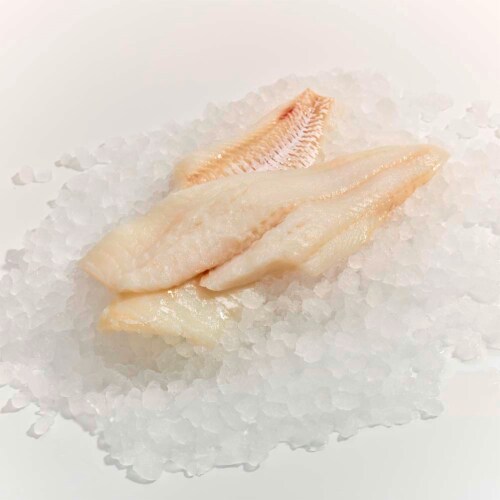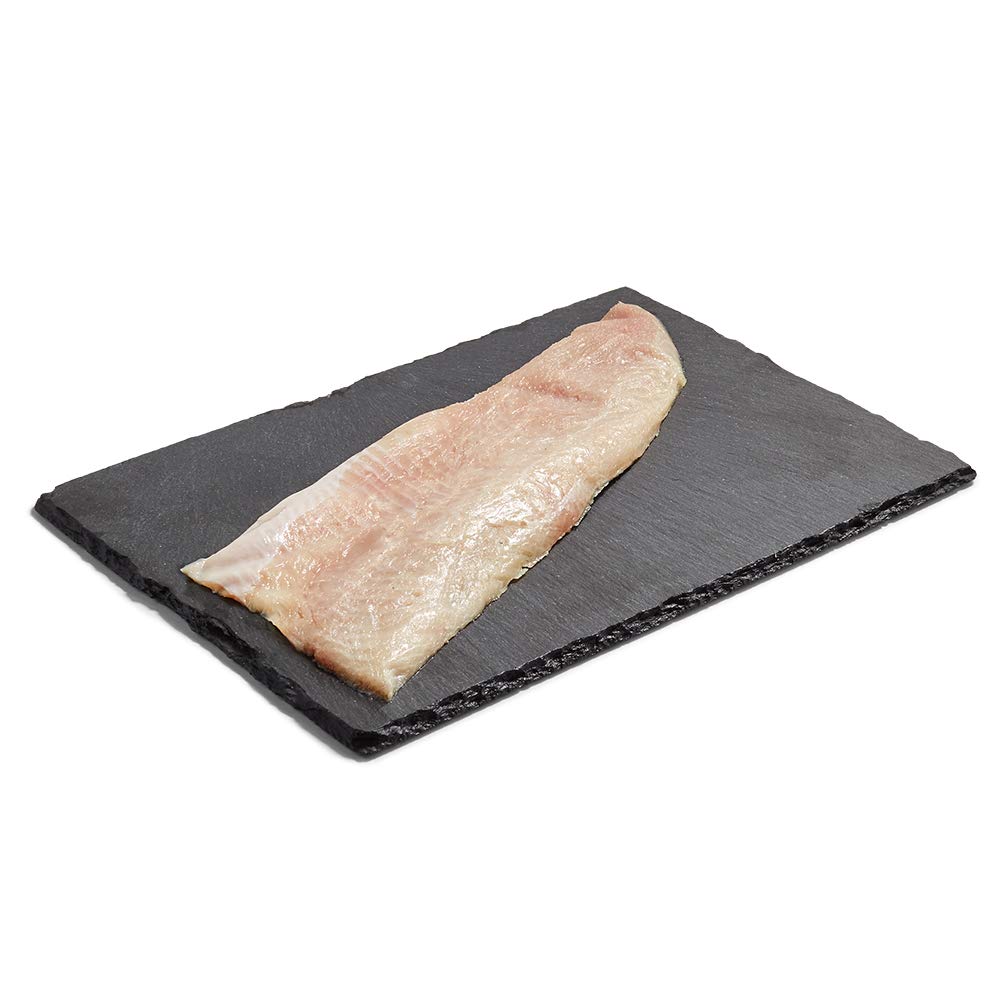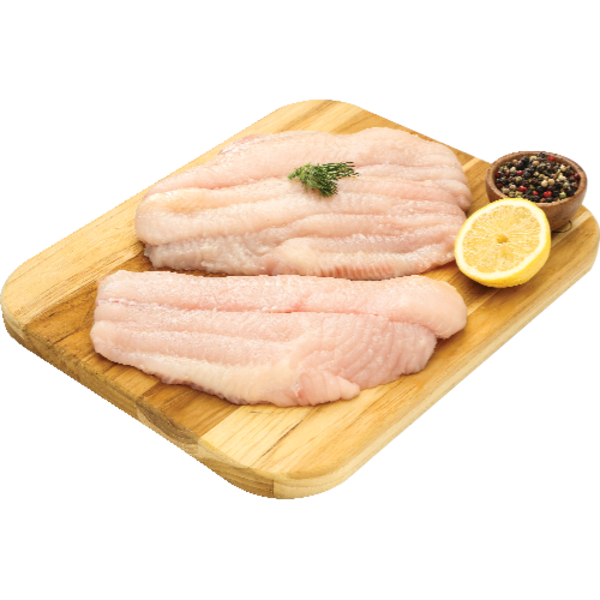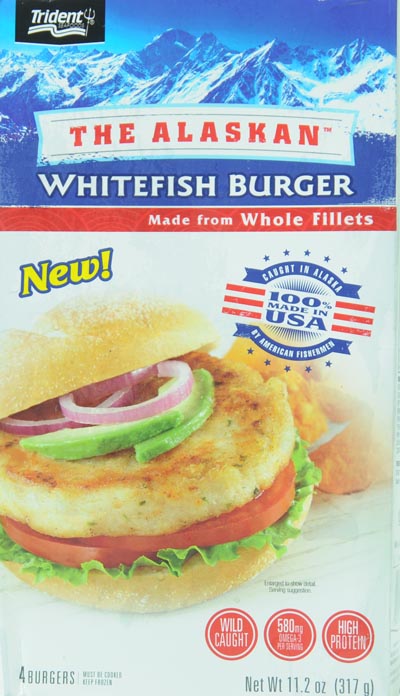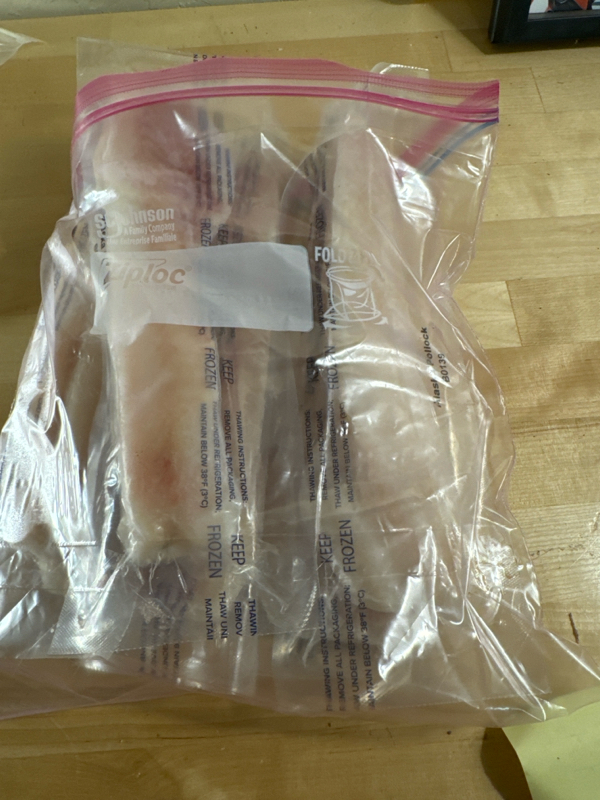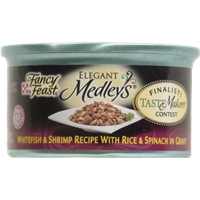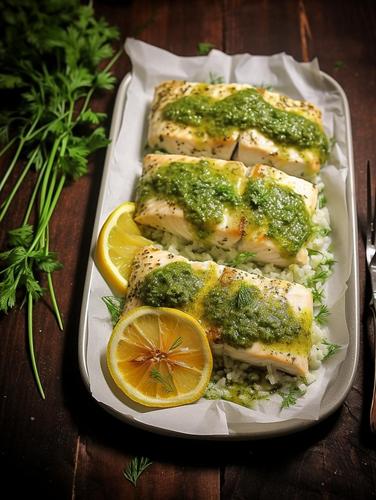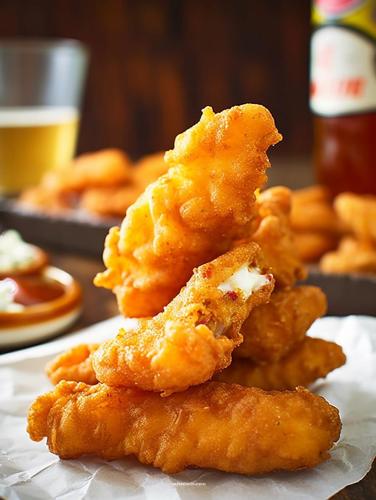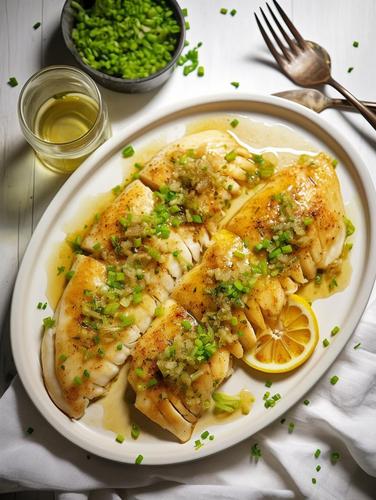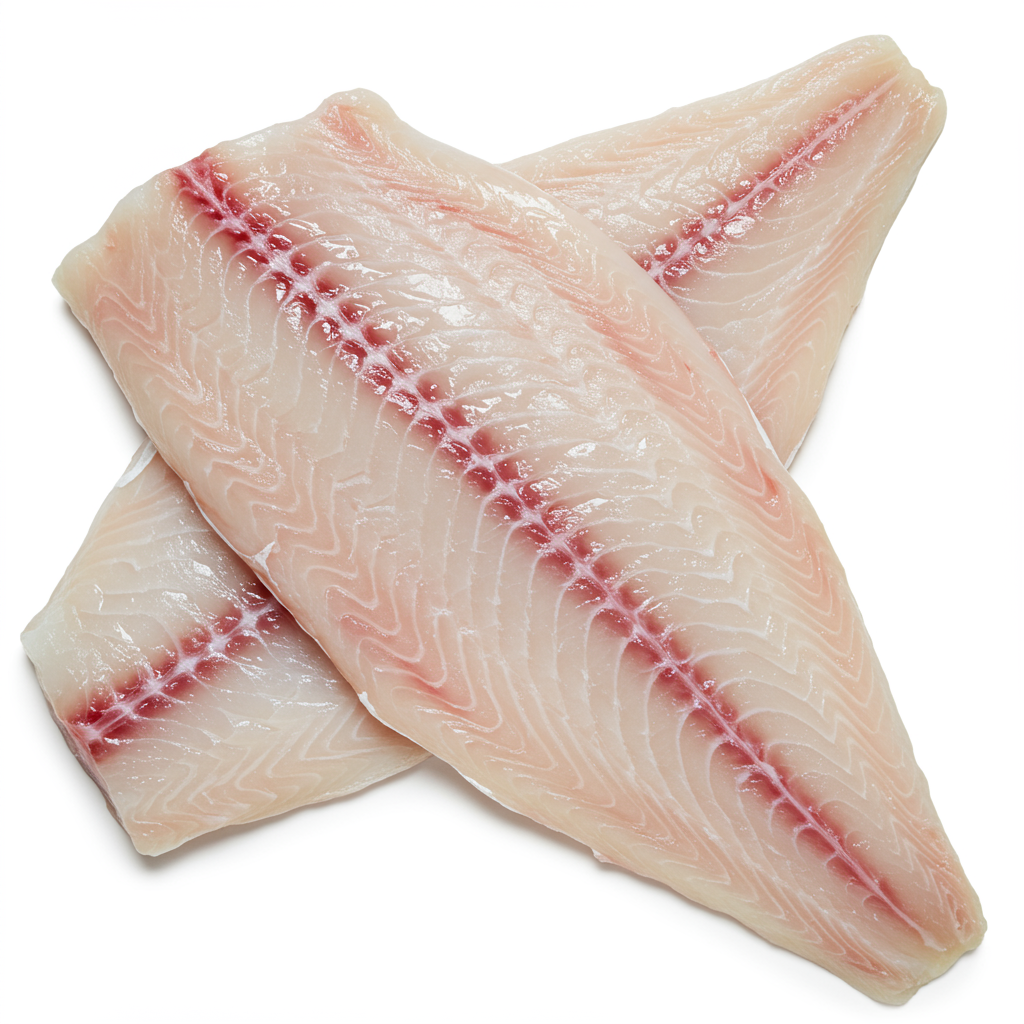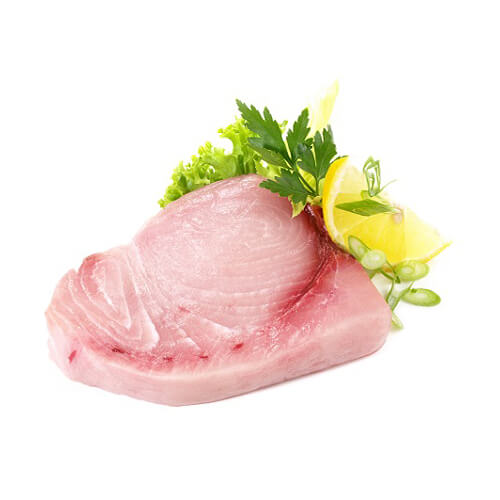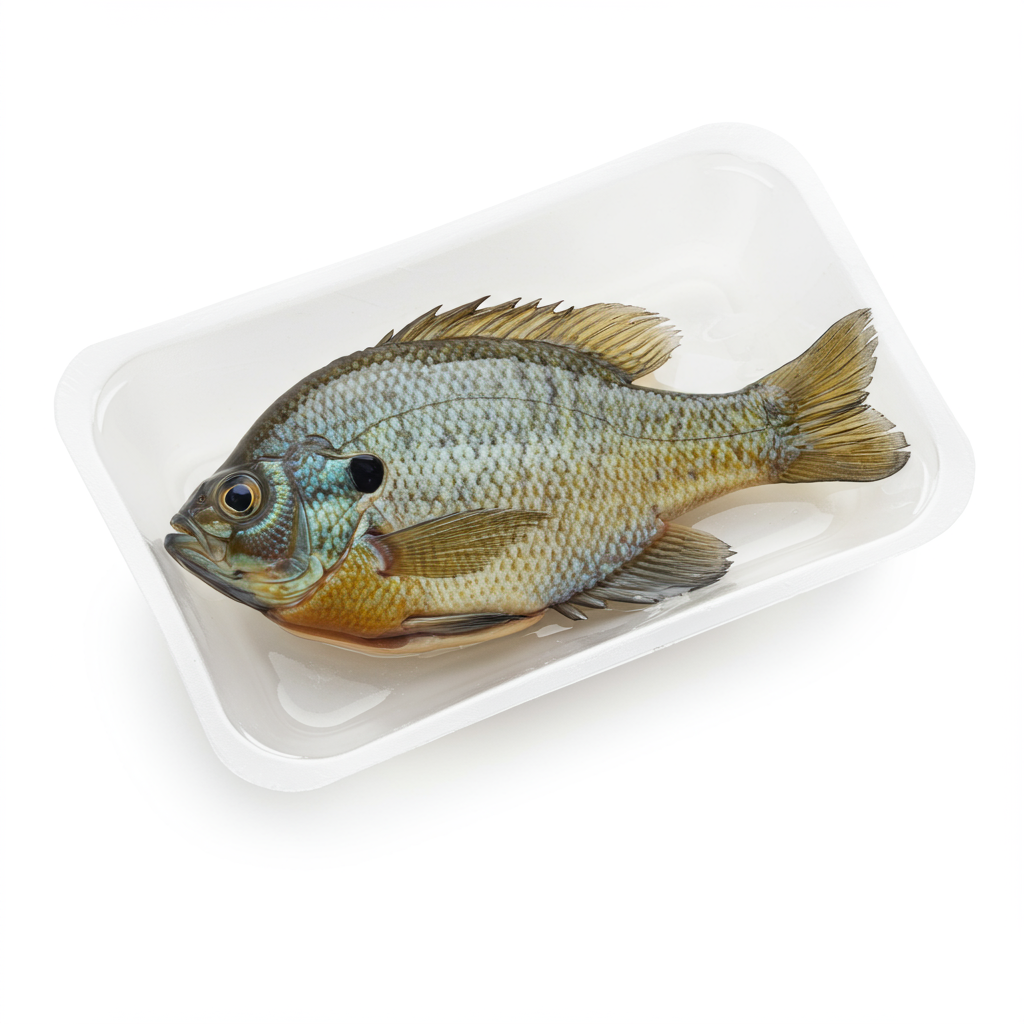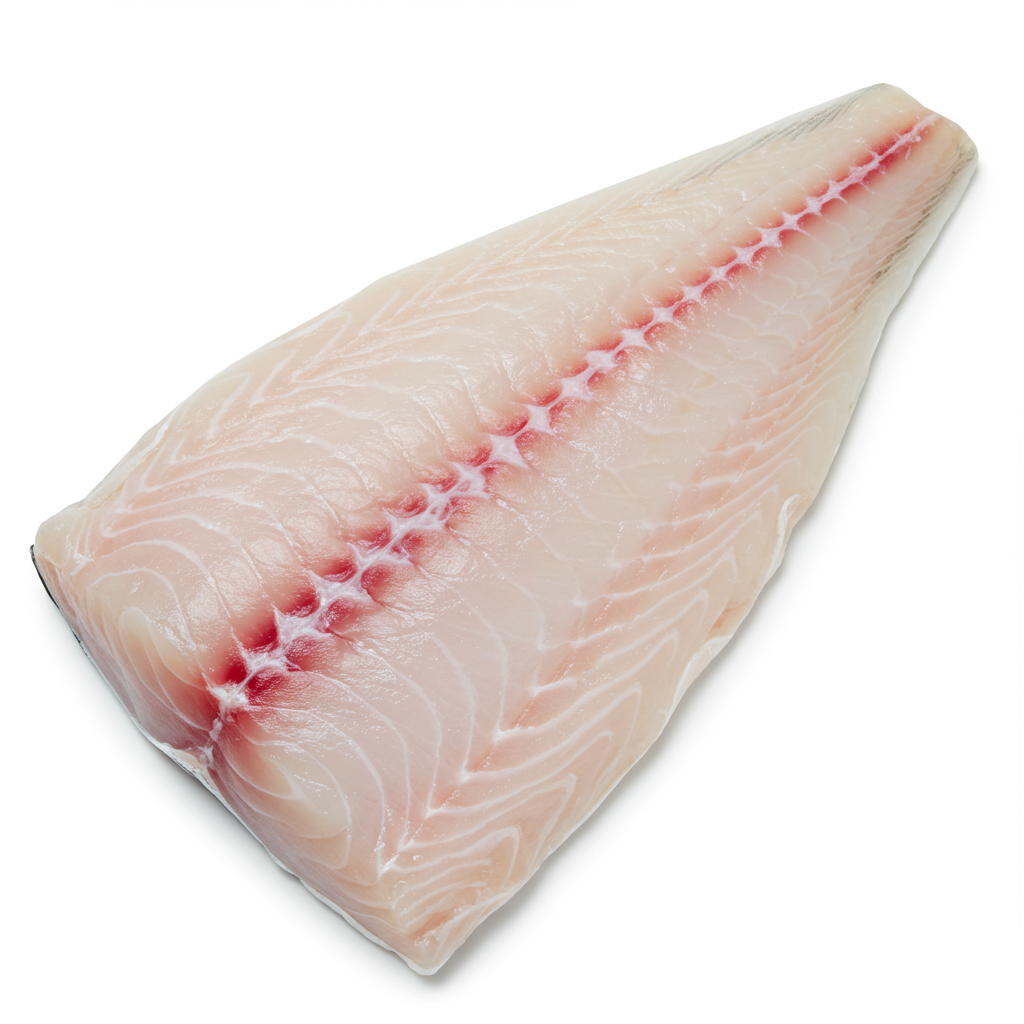MAIN DISHES
SOUPS
SALADS
White Fish
White fish refers to a variety of mild-flavored, low-fat, and versatile fish species commonly used in cooking. Popular types of white fish include cod, halibut, pollock, haddock, and tilapia. These fish are typically boneless and have white, flaky flesh that holds its shape well when cooked, making them highly suitable for various culinary applications.
White fish can be easily incorporated into a wide range of dishes such as fish tacos, grilled fillets, or creamy chowders. Rich in omega-3 fatty acids and low in mercury, they are a healthy and nutritious addition to one's diet, offering an excellent source of protein to any meal.
0%
CARBS
7%
FAT
93%
PROTEIN
143 White Fish Products
Whitefish Fillet
Whitefish Fillet
Kroger Seafood Finfish Lake Whitefish
Trident Seafoods The Alaskan Whitefish Burger
Kroger Whole Lake Whitefish
Kroger White Fish Fillet (Hake)
White fish fillets
9Lives Hearty Cuts - Real Ocean Whitefish & Tuna In Gravy - 5.5 Oz - 24 Ct
Fancy Feast Elegant Medleys Whitefish Shrimp Rice
Kroger Whitefish Fillet
Used In 32 Recipes
5
Lemony Parsley Baked Fish Fillets
4
Golden Delight Beer-Battered Fish
4
Tropical Fish Taco Bowl Extravaganza
2
Lemon-Parsley Delight Baked Fish Fillets
5
Soy Ginger Steamed Fish
3
Mediterranean-Style Baked Fish with Vegetables
6
Healthy Pistachio Crusted White Fish
6
Baked Fish Tacos Recipe
White Fish Is Frequently Used With
White Fish FAQ
White fish is often a staple in many household meals. Its mild flavor and versatile texture make it perfect for a wide range of dishes. A common mistake when cooking with white fish is overcooking it, causing it to become dry and less flavorful. To prevent this, it's recommended to monitor the fish closely during cooking and take it off the heat when its internal temperature reaches 145 degrees Fahrenheit.
Another area where people often go wrong is not seasoning the fish enough. Given white fish's lightly flavored nature, it benefits from a good amount of seasoning to bring out its flavor. Spices, herbs, citrus zest, or marinades can significantly enhance the taste of the fish.
To get the most out of white fish, it can be paired with strong flavored accouterments and bold recipes. It's also important to note that white fish should be cooked with gentle methods, such as baking, broiling, or steaming as aggressive cooking methods can make it tough.
A little-known tip is that you can test the cooked fish by lightly flaking it with a fork. If it breaks apart easily, your fish is perfectly cooked. Anyone can master cooking with these lovely proteins with a little practice and the right cooking techniques.
What is the best way to cook white fish?
How can I tell when white fish is done cooking?
Should I rinse white fish before cooking it?
What seasonings go well with white fish?
In what recipes can I use white fish?
How can I keep white fish from falling apart while cooking?
Can I substitute white fish with any other type of fish in a recipe?
Is it necessary to remove the skin from white fish before cooking?
Can I cook white fish from frozen?
How can I add more flavor to my white fish dishes?
Expiration & Storage Tips
When does white fish expire?
White fish has a fairly short shelf life. If you store it in your home fridge unopened, it should be good for 1-2 days after buying. Always check the printed date on the package if you're not sure when it was packed. Once opened and out from the package, the fish should be consumed within the same day for best taste and safety. If you've frozen it, you can expect the fish to keep its quality for up to six months.
How do you tell if white fish is bad?
If your white fish has spoiled, it will have a strong fishy or sour smell - fresh white fish should have a mild, ocean-like smell. The color is another giveaway: if you see discolorations or dark spots on the flesh, throw it away. The fish may also feel slimy or mushy when touched. If you taste it and it has an unusually strong or 'off' flavor, don't continue eating. These are all signs the fish has turned bad and can potentially make you sick.
Tips for storing white fish to extend shelf life
• Always store white fish in the coldest part of your refrigerator, preferably in the bottom back shelf.
• Use vacuum sealed bags for best results if planning to freeze the fish to extend its shelf life. This reduces air contact, which slows down freezer burn and keeps the fish tasting fresh.
• If you don't have vacuum sealing options, wrap the fish tightly in freezer paper or plastic wrap before storing it in plastic freezer bags.
• Don't forget to label and date each package so you can keep track of their freshness.
• If you've pre-cooked the white fish, you can keep it in the fridge for up to 3 days, but make sure to cool it at room temperature before refrigerating to avoid increasing the fridge’s temperature.
• Always thaw frozen fish in the refrigerator rather than at room temperature to avoid bacteria growth.
EXPIRES WITHIN
6 - 11
DAYS
Health Info
Macros
0g
CARBS
1g
FAT
15g
PROTEIN
Allowed on these diets
LOW FAT
HIGH CALCIUM
KETO
PALEO
WHOLE 30
MEDITERRANEAN
LOW CARB
LACTOSE FREE
GLUTEN FREE
Contains these allergens
FISH

